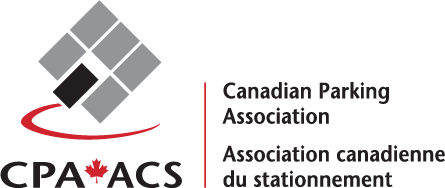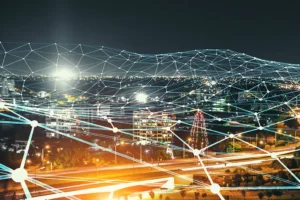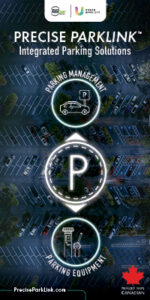By Steve Gorski
The Canadian government strongly supports the development of smart cities as a means to enhance urban sustainability, digital innovation, and public well-being. Initiatives like the Smart Cities Challenge launched by Infrastructure Canada and the Investing in Canada Plan have led to the investment of hundreds of billions of dollars in smart city development across Canada. And these investments have been perfectly timed. The introduction of innovative parking and mobility technologies in recent years is making it possible for the longstanding smart city dreams of federal, provincial, and municipal leaders and urban planners to finally be realized.
At the core of smart city initiatives are several key objectives aimed at improving the quality of life for citizens: reduced congestion and enhanced mobility, better energy management, more resilient and adaptive infrastructure, more efficient public services, and greater citizen engagement.
The Role of Technology in Smart Cities
Technology is the key enabler of smart city development, facilitating real-time data collection, processing, and analysis to drive efficient urban system management. The most important smart city technologies include:
- Parking Guidance Systems (PGS): Directs drivers to available parking spaces, reducing congestion and emissions caused by unnecessary searching.
- Parking and Revenue Control Systems (PARCS): Automates parking management, integrating payment, access control, and occupancy tracking.
- Intelligent Traffic Systems (ITS): Utilizes real-time data and algorithms to optimize traffic flow, enhance safety, and reduce travel times.
- Parking Pre-Booking: Allows drivers to reserve parking spaces in advance, streamlining city logistics and improving the user experience.
- AI for Predictive Wayfinding: Combines AI with real-time data to guide drivers to optimal routes and parking spots, reducing delays, and enhancing urban mobility.
Hardware is just part of the equation though. To create seamless smart cities, open interfaces and interoperability are crucial. First…
By Geoffrey Garnier
What does the city of tomorrow look like?
The city of tomorrow, which calls itself “smart,” will implement connected solutions (thanks to sensors, artificial intelligence, Internet of Things, etc.) that will collect a set of usable and concrete data to make the best possible decisions.
The benefits for these cities are multiple: first, it allows them to improve the engagement of public authorities and citizens by providing solutions that involve them and offer them a better quality of life. But also, to solve their environmental problems with solutions that are ecologically oriented.
Cities are therefore more connected, efficient in their decision making and eco-responsible.
North American cities are particularly ahead of the curve on this smart city concept with the aim of improving their productivity as well as their connectivity. Many of them have joined the Cities for Climate Protection™ campaign organized by the UN, which commits them to implementing eco-responsible solutions to promote the climate transition. Of the 650 participating municipalities, nearly half are North American: 159 are American and 133 are Canadian.
Some sobering parking figures…
95%, 17h, 900,000 tons… But what do these numbers correspond to? These figures are all related to parking and are the results of different studies around the world:
- 95%? The time that a private vehicle remains in a parking space. (International Parking Institute, Why parking matters, 2015)
- 17h? The average time a typical user spends looking for a parking space over the course of a year. And that same average is 107 hours in New York. (INRIX, The Impact of Parking Pain in the US, UK, and Germany, 2017)
- 900,000 tons? Greenhouse gas emissions that can be avoided through smart parking solutions. (Köln auf dem Weg zur Smart City, 2017)
These figures can be thought-provoking.
Indeed, parking lots are very often neglected and little…







